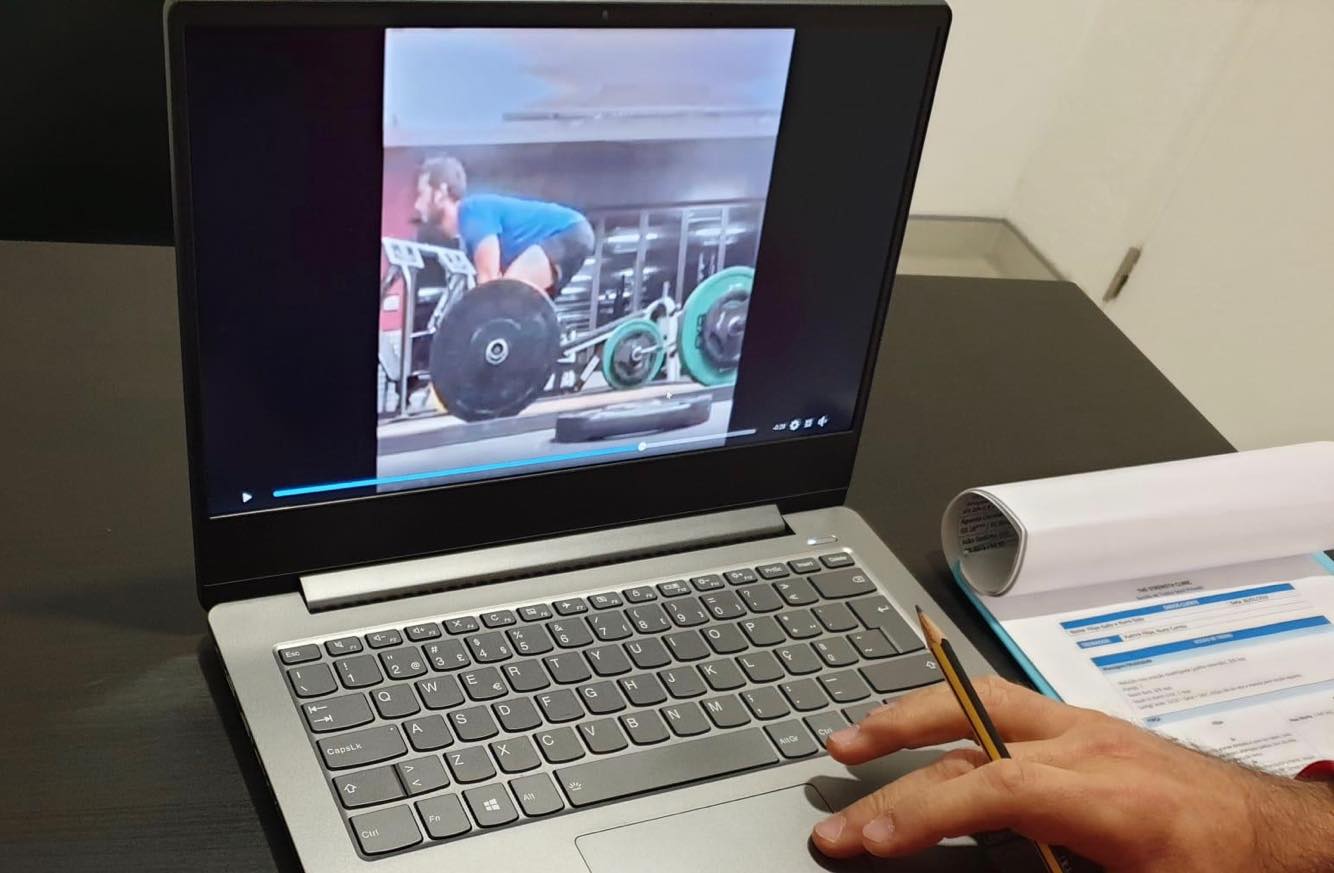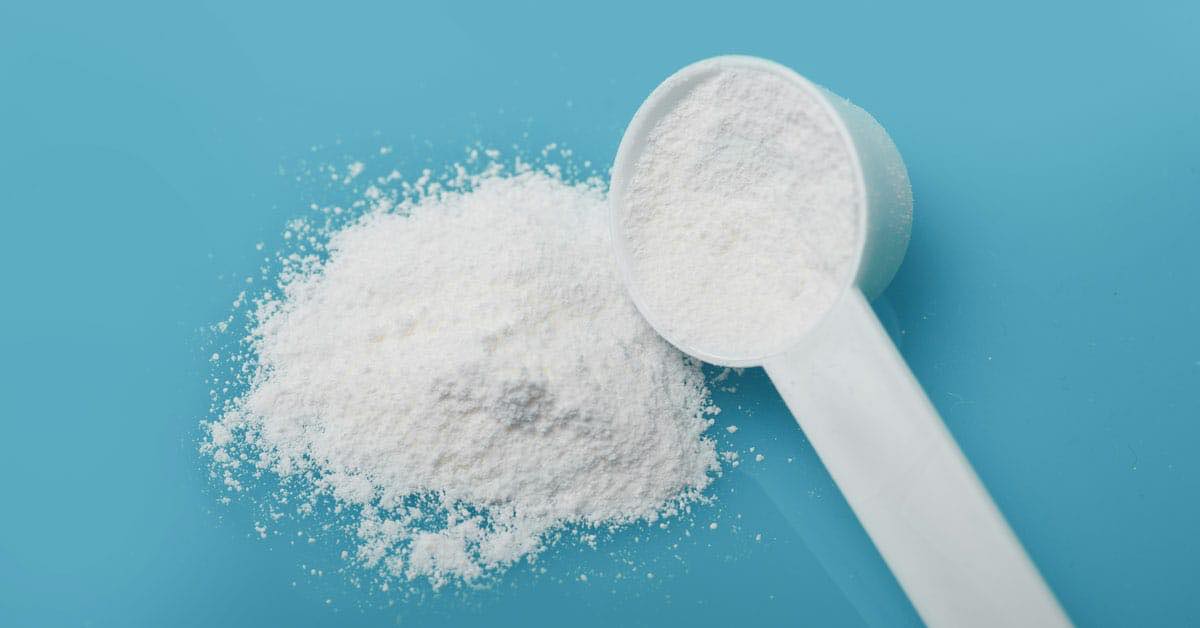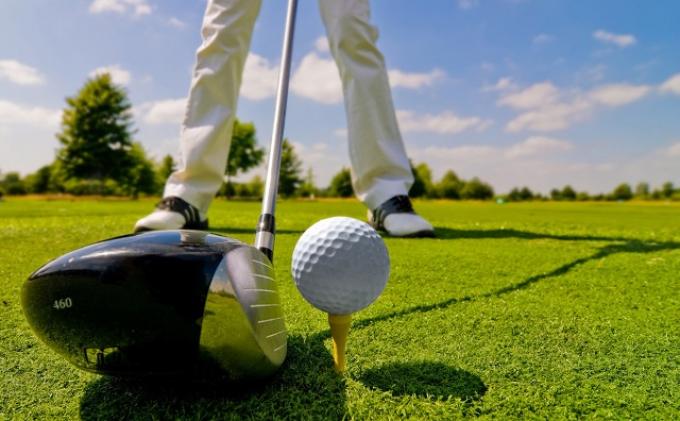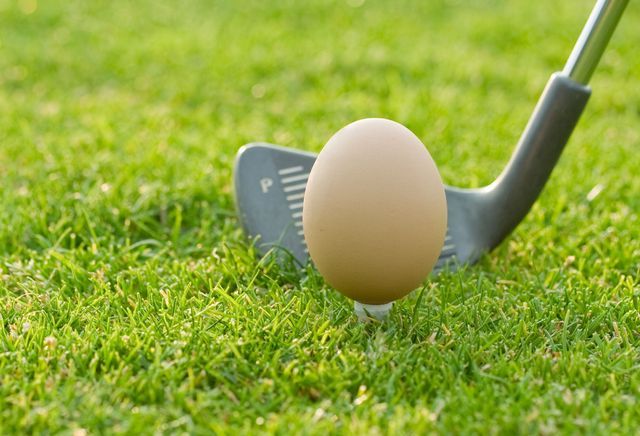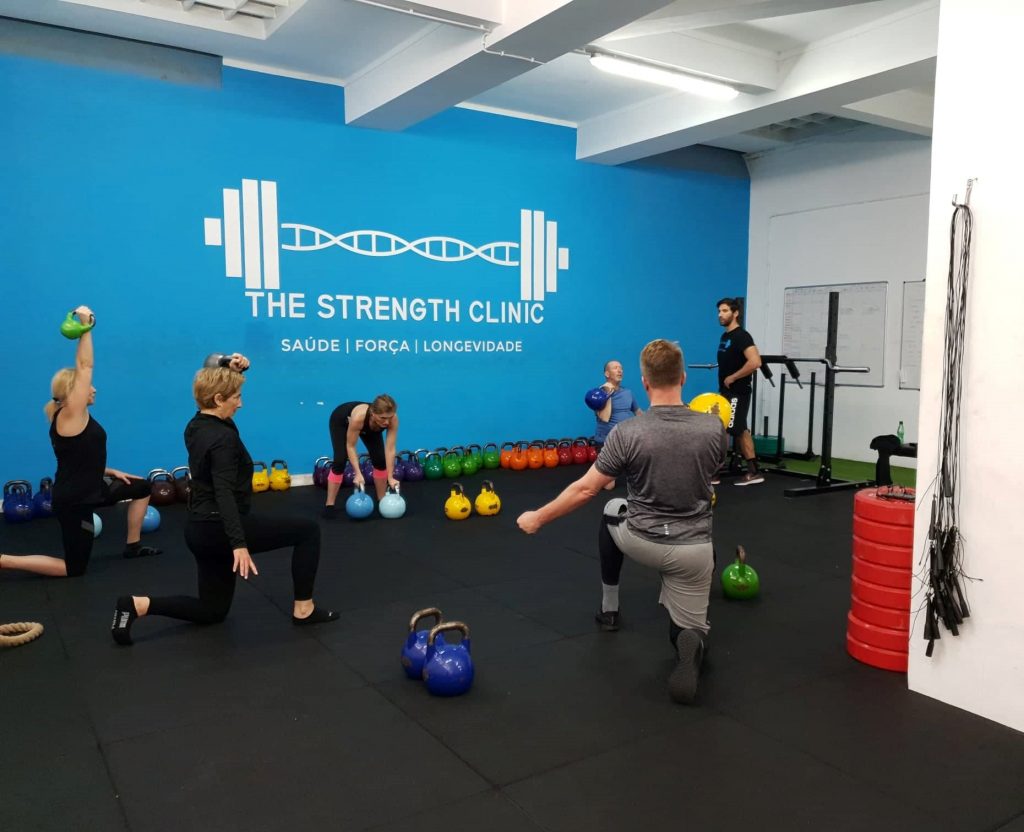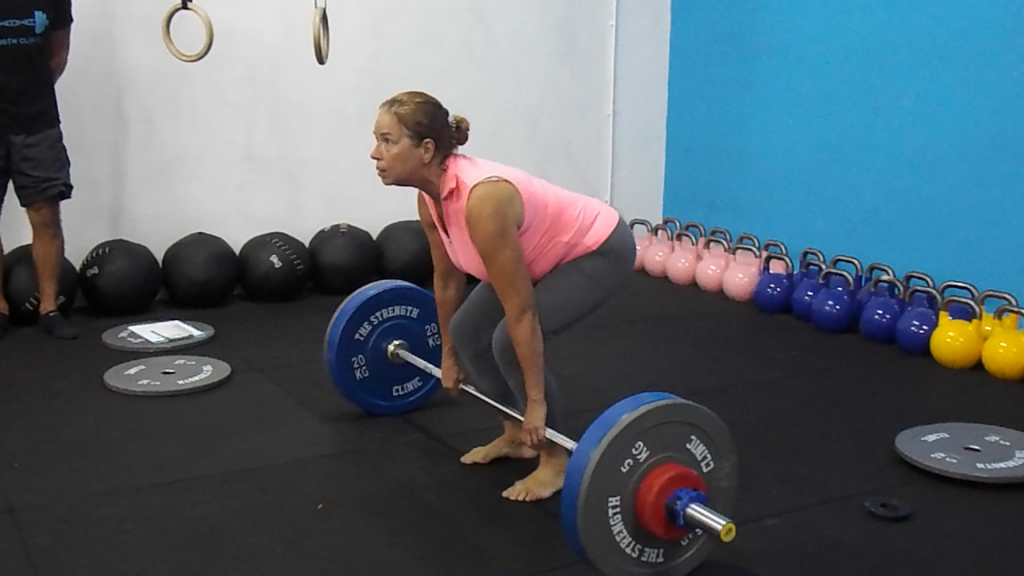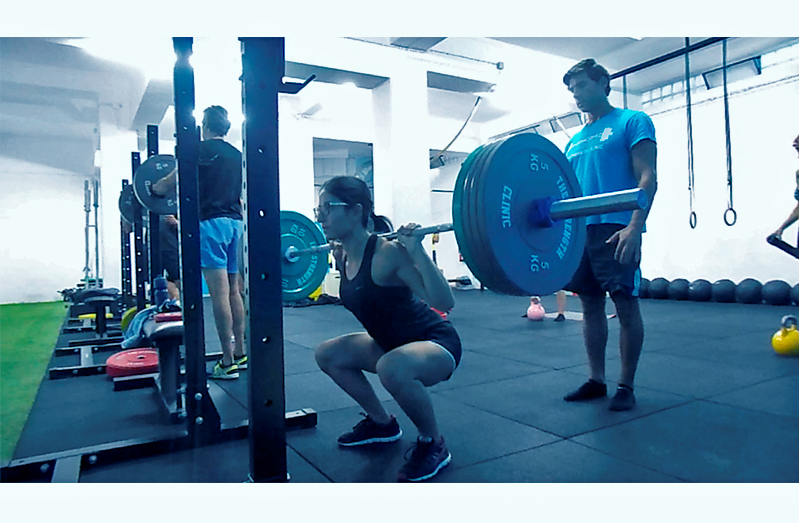Given the times we live in, where social contact is limited, the promotion of online services in all professional areas proliferates. In fitness, it seems that it has suddenly been discovered that you can (and should) train every day and that you can train at home and/or on your own. It is incredible the explosion of posts on social media by personal trainers offering sequences of exercises for people to perform at home. We know that, for better health and resilience, it is essential to exercise every day, just as it is essential to eat well and maintain personal hygiene, but this has always been so and, therefore, it is not only a necessity of current times.
For this reason, posting an exercise line-up for everyone to perform is as valuable as posting a photo of a meal or of someone brushing their teeth. It serves as much to remind you that these activities are important, but the content is not, to a large extent, applicable to you reading this text. Much less when it comes to exercise. In fact, picking up the fork and knife to eat, or the act of brushing your teeth are less complex activities than performing most of the physical exercises that we often see proposed, let alone organizing them in a training session.
The health and resilience resulting from training is even more relevant in times of crisis such as the one we are experiencing now, but that health and resilience was mainly built months and years prior to this moment. Notably during those months and years that you consistently went to the gym to do your workout, often with personal sacrifice. It is hard to organize oneself in order to be able to train! We have family and work and it is sometimes difficult to reconcile all social and professional obligations with the time we choose to invest in our health and well-being, like in the case of training. Notice that now I’m using the term training.
Because many of you who are reading these lines have long understood the difference between “exercising” and training. Many of you have realized that “exercising” is better than nothing, but that training is at a higher level. Training is a process that requires the organization and management of a range of variables over time. It requires making a careful assessment of the initial condition, selecting specific exercises and the ways to perform them, observing and evaluating movement, and making the necessary adjustments (e.g. load, type and form of exercise execution) in order to ensure constant progression along the path towards health, performance and resilience. Training is not the same as ‘’doing exercises” always varied and without criteria just to maintain some physical activity. And because some of you understand this difference, you have come over the months and years that preceded today’s turbulent times to make organizational sacrifices in order to train. And you chose to invest a little more of your time and money, and regularly went to a gym to get a training service. A service in which a program is followed, the exercises are not chosen at random, and in which the progression in the loads used as well as the execution of the exercises is closely monitored by a coach.
All the benefits of personalized training are possible to obtain remotely via online. I believe that the in-person format will always be superior, but with good organization and commitment from both the coach and student, constant progression is possible, and this difference can be mitigated. How do we know this at The Strength Clinic? Because we’ve been doing it for years! In addition, personalized training followed online may even have some advantages over the face-to-face format, such as:
- Not having to go to the gym at any given time. This can be a great advantage for some people. If the self-discipline of following your training program is guaranteed, travel time and what it implies in organizational terms is saved. In addition, you can choose a training time slot that best fits your schedule without being conditioned by the availability of your coach;
- Greater consistency and commitment doing the exercises in your program. Since you can choose the time slot of your training session, you are less likely to miss it, as you will have more flexibility in adjusting the schedule if needed. This way, it is more likely that you reach the weekly training frequency that is desirable. In addition, as we recommend that you document on video a summary of each workout on an online platform so that your coach can observe, this also adds an additional sense of commitment to the session and the proper execution of the exercises;
- Better cost benefit. In fact, you will be able to enjoy almost all the benefits of having a personal trainer for a lower price because you will not have to pay for the running costs of the facility and its equipment usage where the in-person training session would take place;
- Train directly with your favorite coach. If the coach you would like to work with is not available in-person or his/her in-person rate is beyond your means, the online option will allow you to work directly with him for a lower price.
The message “don’t stop training even if you are at home or on your own” in the context of the crisis we are experiencing today is correct! However, this need did not arise today. It is something that should be part of our lives if we want to remain getting stronger and healthier forever. For this purpose, training is much better than just “exercising”, especially if you follow workouts taken from social media that do not take into account your specific profile, your body awareness and do not follow any criteria for exercise selection and future programming. It only serves the purpose of “moving the body” and getting tired in that moment or day, but it will not accomplish much more than that. Because training implies a process that is based on your goals and individual characteristics. In a training session, what you do today was based on what you did yesterday and what you are going to do in the future. And it is possible to continue to train online and reap all the benefits of personalized training, even at a distance. It requires a mutual commitment of the student and coach in a process that is joint. Your optimized personal development will always be our commitment at The Strength Clinic. We are here to guide you through this process rather that offering “one size fits all” workouts for everyone!
Stay strong!
Nuno Correia
The International Society of Sports Nutrition published in 2017 a position stand (see reference below) on the safety and efficacy of creatine supplementation in the context of exercise, sports and medicine.
Creatine supplementation, one of the most popular and studied nutritional supplements, has in fact been shown to be effective in improving athletic performance (especially in high intensity exercise) and inducing relevant training adaptations. The consequent increase in intramuscular creatine (and phosphocreatine) reserves facilitates the rapid re-synthesis of ATP, the so-called energy “currency” of the body, which is essential for almost every reaction in our body. Thus, the increased availability of creatine in the cell through supplementation contributes to improve performance because it increases the energy availability in order to exercise (i.e. muscle contraction) as well as a whole range of other muscle cell related reactions. Creatine supplementation can in fact enhance strength production, muscle work, accelerate recovery and help preventing injury.
Additionally, creatine supplementation appears to be highly safe and effective not only in athletes but also in non-athletes (such as the so-called exercise enthusiasts), as well as in various clinical populations. In fact, several studies (see ISSN article, reference below) point to benefits of creatine supplementation in various populations and clinical settings, such as:
– Accelerating injury rehabilitation (because it attenuates muscle atrophy);
– Protection of neuronal injuries (spinal and cerebral);
– Mitigation of debilitating consequences in people with congenital syndromes of creatine synthesis deficiency;
– Attenuating the progression of neurodegenerative diseases (e.g. Huntington’s disease, disease, Parkinson’s disease, mitochondrial diseases, amyotrophic lateral sclerosis);
– Prevention and / or improvement of bioenergetics in patients with myocardial ischemia or stroke victims;
– Improving metabolic and functional indicators associated with aging;
– Possible benefit during pregnancy for optimal growth, development and health of the fetus.
In conclusion, creatine does indeed appear to be a safe and beneficial nutritional supplement for a wide range of populations and ages. Indeed, this is a supplement that actually works!
Take creatine and power to you!
Nuno Correia
References:
Kreider, R.B. et al., 2017. International Society of Sports Nutrition position stand: safety and efficacy of creatine supplementation in exercise, sport, and medicine. Journal of the International Society of Sports Nutrition, 14(1), p.18. Available at: http://jissn.biomedcentral.com/articles/10.1186/s12970-017-0173-z.
In order to maintain physical function, recover better from injury, maintain lean mass and stay healthier overall, older individuals need a higher protein intake than younger individuals. Higher protein intake contributes for attenuating inflammatory and catabolic processes, as well as ameliorating the decreased efficiency in protein metabolism associated with age.
According to the recommendations advanced by the PROT-AGE Study Group (2013) (reference below), older individuals should:
– eat at least 1 to 1.2g/kg body weight of protein per day;
– eat MORE protein if suffering from acute or chronic illness, between 1.2-1.5g/kg body weight of protein per day;
– ingest EVEN MORE if malnourished and / or suffering from severe illness or injury, ~2g/kg body weight of protein per day;
– limit protein intake if suffering from SEVERE KIDNEY DISEASE and NOT following hemodialysis. These individuals are therefore an EXCEPTION concerning protein intake;
– use supplementation to the achieve desired protein intake levels;
– and, of course, DO the type of exercise that most effectively promotes the maintenance or increases in lean mass, which is strength training.
And no, kidney disease is NOT caused by protein intake. In a one-year follow-up study with resistance-trained men consuming ~2.51-3.32 g/kg of body weight per day for one year, there were no harmful effects on measures of blood lipids as well as liver and kidney function (Antonio et al, 2016).
Maintaining strength and lean mass (including muscle mass, bone and connective tissue mass) are identified as the first and most relevant biomarkers of health and longevity. Improving these markers produces a positive and powerful “domino effect” on most (probably all) of the other health markers. Proper protein intake and strength training is essential for building lean mass. And even more crucial as we age in order to counteract the inevitable progressive loss of efficiency in our metabolism.
Do not fear protein nor strength training. These are probably two of your best allies to live better and longer.
Don’t forget the protein at your next meal!
Nuno Correia
References:
Bauer, J. et al., 2013. Evidence-based recommendations for optimal dietary protein intake in older people: A position paper from the prot-age study group. Journal of the American Medical Directors Association, 14(8), pp.542–559.
Antonio, J., Ellerbroek, A., Silver, T., Vargas, L., Tamayo, A., Buehn, R., & Peacock, C. A. (2016). A High Protein Diet Has No Harmful Effects: A One-Year Crossover Study in Resistance-Trained Males. Journal of nutrition and metabolism, 2016, 9104792.
In previous articles (check Part 1 and Part 2) we discussed the fact that while all golfers will do everything possible to change their game (buying new clubs and new balls), many overlook one of the most decisive factors for their physical and mental success – their nutrition; we have identified some of the main reasons why golfers never change and, finally, we have pointed out five important links between golf and proper nutrition. In this article, I will share with you my concerns about the so called “normal diet” and the five most important habits you should create to start nourishing your body better.
The Western Diet
The western diet is generally used to describe popular eating habits in the USA. As these eating habits are still very popular in Europe and other parts of the non-Western world, it will probably be necessary to find a new name for this type of “diet” in the coming years (perhaps the killer diet is a good name!).
But what is the “western diet?” Well, this “diet” can be briefly characterized by a high intake of processed foods, refined carbohydrates, sugar and hydrogenated fats; and a low intake of healthy fruits, vegetables and fats. It is this “western diet” that has been associated with most western diseases or diseases of civilization (examples: cardiovascular disease, obesity, diabetes, cancer, Alzheimer, Parkinson). Interestingly, this diet may also be responsible for increased violence and decreased cognitive test scores in school-age children (attention deficit disorder) and adults. Finally, this “western diet” has also been linked to bone loss (osteoporosis) and muscle wasting (sarcopenia) in adult individuals.
Let’s look at an example of a “normal athlete” daily menu before working with me.
Breakfast: Bowl of cereals and milk + Natural orange juice + Coffee with sugar
Snack 1: Mixed toast + Chocolate milk
Lunch: Chicken salad with mayonnaise and ketchup sauce + soda + ice cream
Snack 2: Slice of cake + Juice
Dinner: Grilled fish with vegetables + Baked potatoes + Glass of red wine + Dessert
For most people, this may even be considered a good day (and indeed there are some good things in this menu), but in the long run this type of eating will greatly compromise your health and performance. For this reason, we have to discuss this situation with the person and meet their real physiological and functional needs.
The Habits you must create
Before changing their diet, it is important that people start with a firm and solid foundation, and then make the necessary changes to optimize their health and performance. Most people (athletes included) want to start building a house from the roof down or building walls without paying attention to the quality of the soil. Any of these habits are simple enough, but just like any habit you want to create, it takes time to practice to assimilate the foundations of proper nutrition.
Habit 1 – Drink more water
Sometimes we talk about so much about food and forget about water, the most important element our bodies need to function properly. It is water that regulates all the functions of our body, including the activity of all solutes (the solid materials) dissolved in it. It is water that will actually allow the nutrients we consume to reach our cells and our organs. Aim to consume 1-2 glasses of water after waking up and to drink about 2 liters / day.
Habit 2 – Eat a protein source at every meal
Eating protein at every meal is critical. Of course, some “experts” will make you believe otherwise, suggesting that protein is somehow harmful to the kidneys, unnecessary, etc. However, I want to highlight the fact that what I am looking for my clients / athletes is the best of these three worlds: better health, better body and better performance – it will be very difficult to achieve these three with a suboptimal protein intake. Some examples include: eggs, meat, fish, chicken, turkey and shellfish.
Habit 3 – Eat vegetables at every meal
Your parents and / or grandparents are right – you need to eat vegetables to prevent disease! Evidence has shown that in addition to the micronutrients (vitamins and minerals) contained in vegetables, there are also phytochemicals that are essential for optimal physiological functioning. Vegetables will help improve the acid-base balance in the body, so my advice is eating all the vegetables you can!
Habit 4 – Eat a healthy fat sources at every meal
Fat (such as protein) is an essential macronutrient and so we have to ensure proper intake every day through our diet. There has been a lot of misconception about the effects of fat on diet but the truth is that fat can be our best friend when the goal is to lose fat mass, optimize the body’s physiological response and our health. Some examples of healthy fats include: fatty fish, nuts, seeds, extra virgin olive oil, coconut and avocado.
Habit 5 – Eat more vegetables with main meals and leave the other carbohydrates to the post workout window
Another way of saying this is: if you have fat to lose, you have to earn the right to eat carbohydrates by doing vigorous exercise in the first place! Do you want to keep eating bread, pasta, rice, potatoes, crackers, sugary foods, pizzas, sweets, etc.? You can even eat them – just make sure you do it in the post workout window (1-2 hours after training) because this is the time when your body is most sensitive to insulin. As for the quality of carbohydrates, you will have more benefits if you choose gluten-free foods (rice, quinoa, chestnuts, sweet potatoes, yams, potatoes) than highly processed foods or gluten-free junk foods. Also, don’t use exercise as an excuse to treat your body like the garbage truck!
Good strokes!
Pedro Correia
Ever wonder why most people eat so much alike? Milk and cereals for breakfast, a soup and a sandwich at lunchtime, and, with luck, a slightly more balanced dinner of meat or fish, rice and some vegetables? What about those mid-morning and/or afternoon coffee and toast snacks? Crackers? Cakes and sodas? Cereal bars? Do you think this is a coincidence? Of course not, this is no coincidence!
This only happens this way because that is how you were taught to eat. Maybe this is the way your parents eat. Perhaps this is the way your wife, husband or partner eats. Maybe this is the way your friends and/or co-workers eat. Maybe this is the way your teammates eat. In fact, people do not even realize if what they are eating is appropriate or not for our physiology and genetics, if it improves or worsens health, if it improves or worsens performance, they eat this way because this is the eating pattern that they have been following for many years, and these were the habits they have ingrained.
In the last article we covered several reasons why golfers neglect nutrition, one of the aspects that can most influence their performance on the golf course. Interestingly, most golfers are more concerned with top-of-the-range clubs and new accessories than the foods they eat. And that is why today I will present five reasons for you to improve your diet.
Think about this for a while. If you knew that eating and/or supplementing in a certain way would: 1) reduce your fat mass; 2) increase your muscle strength; 3) improve your bone health; 4) enable a faster recovery; 5) increase your distance from the tee; 6) improve your mood; 7) reduce feelings of anxiety and anger; 8) improve your concentration and creativity; 9) improve virtually any known health marker and 10) improve your performance in training sessions and/or competition, would you be willing to eat that way? Given this short list of benefits I think it would be worth a try. Stay with me.
- Eating well will improve your body composition
Your total body weight is the sum of your lean mass and your fat mass. Lean mass consists of muscle mass, organs, bones, blood and skin. Your fat mass is basically all the fat that has accumulated in the body. For an individual to be considered athletic, he or she needs to maintain a good ratio between lean mass and fat mass. And golfers should be no exception. By this I do not mean that all golfers need to have Cristiano Ronaldo’s abs, what I mean is that under normal circumstances excess body fat has no benefits (unless you are a sumo wrestler in the spare time). Excess body fat will affect the efficiency of your swing, your mobility and your rotational power, meaning that you will have greater difficulty moving your body when you carry excess fat. The more fat you have, the more energy you have to use to move your body – the fat will “steal” power from your swing. So, it’s not the fat tissue that will give you power, it’s your muscle tissue!
- Eating well will improve recovery
If you are seriously committed to improving your game, you know you need to practice (and a lot!). According to experts, some professional golfers can hit 600 balls a day including chips and putts. And to perform all these swings you need muscle strength and power, meaning you need to do some kind of work in the gym! If the body is not prepared to cope with this type of stress in a regular basis, injuries and pain will begin to rise. If you often end your golf training sessions sore, if you notice fluctuations in motivation, if you can no longer hit balls in a coordinated manner, if you notice reductions in appetite, and if you are awake at night despite training a lot, it is very likely that your recovery is not being optimized. Muscle damage, Central Nervous System fatigue, and over-reaching are all common symptoms of many sports, but golfers tend to ignore these things. Although golf is not as physically demanding as other sports, the fact is that the daily training volume to which the body is subjected is large and this will make nutrition a key part of recovery.
- Eating well will improve mood, concentration and focus
Any professional golfer on the PGA Tour and/or the European Tour is capable of winning any major event. But why do some stand out more consistently than others? Because, according to experts, those who excel are mentally unshakable. That is, their ability to turn off negative internal dialogue, to consciously relax the brain and to focus with unflappable concentration is impressive. Some consider this to be an innate skill. And it is indeed. But it can be trained! However, there is also a biochemical basis for this mental prowess. You should know that by providing the right nutrients, including nutritional supplements, at the right times, the physiological link between the brain and muscles can be strengthened. Such as focus and concentration. For example, by controlling your blood glucose levels with frequent meals and less dietary sugar, mood fluctuations and that feeling of low energy after lunch can be eliminated. Therefore, in addition to body composition and recovery, nutrition can strongly affect your mental game. With the right nutrients, concentration, neuromuscular efficiency and mood can be significantly improved. On the contrary, if you do not ingest good nutrients, fatigue will appear earlier and you will no longer be able to concentrate in the same way.
- Eating well will improve your health
When I am talking about health, I am not just referring to the absence of pain and/or illness, I mean a feeling of physical, emotional and mental well-being. To perform at the highest level, health needs to be optimized, so the definition of health I share with my clients/athletes includes: 1) a resilient immune system; 2) strong antioxidant systems that protect against free radicals; 3) good detoxification systems; 4) a good balance of bacteria in the gut; 5) a good balance of basic and acid foods; 6) low levels of inflammation in the body; 7) an ideal balance between fat mass and lean mass; 8) a good balance of fatty acids; 9) good insulin sensitivity; 10) high energy levels and 11) the ability to maximize mental and physical performance at any age. All of these health markers can be influenced by the foods we eat every day! Therefore, these nutritional strategies will not only help you prevent disease but also optimize your body function and perform at the highest level.
- Eating well will improve your performance in training and competition
It is not surprising to most of you to find that most nutrition on the golf course is poor, ranging from mixed sandwiches and beer, to sports drinks and “energy bars” (note: most of which are basically full of sugar and bad fats) with a seemingly healthy label. These foods are certainly not preparing you for noteworthy performances, I would even say that these foods will compromise your performance. For example, beer is a central nervous system depressant, reducing concentration and motor control. Sports drinks (e.g. Powerade), sandwiches (even wholegrain!) and “energy bars” will raise blood sugar levels, which is-apparently good because it leads to a quick energy rise, but it turns out to be bad because then we’ll also watch a rapid energy drop 45-60 minutes later. When blood sugar levels drop to a peak, mood worsens, focus and concentration decrease – and of course performance worsens!
To optimize your performance in training and competition, there are at least three things that are required. First, you must maintain good hydration, especially in hot and humid climates. Even a slight dehydration can reduce coordination and motor control. Secondly, you must control your blood sugar levels. This means that you should not eat sugar-rich foods, but foods that help keep your blood glucose levels stable. Third, you should resort to some nutritional strategies and/or supplements that help you increase focus and concentration. In short, don’t continue to depend on what they offer you in the golf course bar carts – probably the only healthy thing they have there is water!
Good strokes!
Pedro Correia
All golfers have one thing in common: they will invest a lot of time and money to improve their game! They will hire the best coaches to perfect your golf swing. They will buy the best equipment available to get more accuracy and to gain distance. Those who have already realized the importance of fitness in this sport will hire the best professionals to help them gain mobility, become stronger and more resilient. Some will turn to sports psychologists to learn how to maintain a good attitude in the field, focus and concentration. They do all this in order to make more birdies. But aren’t they forgetting something?
In fact, there is something that most golfers forget to change: their low-quality diet. Most golfers have no idea how diet can influence performance. For starters, they forget that eating poorly will compromise increased muscle strength and will lead to body fat accumulation. And if you still think that having weak muscles and excess body fat is the way to go to become a top-level golfer, it’s not worth reading any further. This article is not for you.
In addition to the deleterious effects on body composition and muscle strength it must be borne in mind that eating poorly will limit focus and concentration, will lead to mood swings and may lead to poor immune function, increased chronic inflammation and general health problems. Try playing several rounds for days at a time when you are in a bad mood, in bad shape, and unable to concentrate. Poor nutrition will have a direct impact on training and competition. Lack of focus, concentration and early tiredness, especially during training and / or competitions, are signs that your nutrition is compromising your performance.
No doubt, you can be very skillful with your golf clubs, do some Ballesteros shots and do some exceptional rounds from time to time, but if you’re looking for consistency in results and longevity as a golfer, there’s no better substitute than the foods you eat every day. None!
So why do golfers never change?
There are several reasons why golfers never change and prefer to continue eating the club sandwiches, the chips and the pasta served in every clubhouse menu in the world. Let’s go through some of those reasons.
1) The myth of the pre-competition meal.
Many golfers (especially beginners) make the mistake of thinking that it is only the food eaten before and during practice and competition that can affect their game. While this may make sense at a first glance, this is not physiologically what happens – most of the energy you are using today depends on the nutrients you have eaten (and absorbed) in the last 72 hours!
Please note, I am not saying that what you eat before and after practice / competition makes no difference. Of course it does! However, these meals are not necessarily the most important. Each meal will have a certain impact on your body regardless of the time frame in which it is consumed. It is the cumulative effect of these meals that will lead to an improvement (or decrease) in performance.
In other words, in golf, there is no pre-competition or intra-competition magic meal. If you’ve waited until the day before a big competition to start eating well, it’s probably too late. I am sorry to inform you but there are no miraculous solutions, you really need to eat consistently well!
2) Golfers cannot see the link between nutrition and performance.
Most golfers do not realize the connection between nutrition and performance. And that’s because they are not aware of how diet will influence their muscle function and brain biochemistry.
In the case of golf, as this is a sport that does not involve too much energy expenditure and does not require athletes to maintain a certain body weight (as with wrestlers, gymnasts, swimmers, endurance athletes or athletes from other sports), it is thought that the need to eat well is not that important. In fact, this relationship might not seem so obvious.
But that’s not the point, golfers don’t need to be muscular and low body fat individuals as you see in fitness magazines. What they need is to develop their athletic potential so that this is not a factor that could hinder their performance on the golf course. Golf is not a very energy-intensive sport so a golfer’s nutritional needs cannot match those of a fighter or an endurance athlete. But different does not mean less important – as we saw above it is not just body composition that will be influenced by diet.
Although the link between golf and nutrition is a little less visible than in other sports, it exists. Maintaining and / or increasing muscle mass, mobility, reducing inflammation of muscles and joints, maintaining focus and concentration, preventing injuries, can all be influenced by nutrition. But only those who put the best nutritional strategies into practice will have competitive advantages (obviously this does not include Big Macs!).
3) The difficulty in changing eating habits.
Probably the most difficult hurdle for most people is overcoming the eating habits they have. Our eating patterns have been around for a long time and few people are willing to change them if there is not a strong reason (as in the case of a serious health problem). And why does this happen? Because we have not been taught to think that food is information for our cells. We have not been taught to think that food will influence the expression of our genes. We have not been taught to think that it is the everyday foods we consume from our environment that can trigger health improvement or health deterioration.
Of course there are many other reasons why golfers are reluctant to change their eating habits and why you don’t change yours. And that’s why in the next article I will continue to address this topic so you can understand why you need to change your eating habits quickly to live healthier and to take your game to the next level.
Good strokes!
Pedro Correia
“People don’t decide their future, people decide their habits and their habits decide their future.”
– F.M. Alexander
Nine years ago (2010)1, the European Working Group on Sarcopenia in Older People (EWGSOP) published a definition of sarcopenia that has been widely used worldwide and this definition has fostered advances in the identification and care of people at risk or with sarcopenia. It was defined as a syndrome characterized by progressive and widespread loss of muscle mass and strength at risk of adverse outcomes such as physical disability, poor quality of life and death. Because the relationship between muscle mass and strength is not linear (the ability to generate strength is not only dependent of muscle mass), the criteria for its diagnosis included low muscle mass and low muscle function (i.e. strength or physical performance).
After learning that in 2016 sarcopenia was classified as a disease by the World Health Organization, as noted in the first part of this article, the EWGSOP22 updated its operational definition and various diagnostic strategies, considering now that muscle strength (measured by grip strength or the chair stand test) is the main parameter for measuring muscle function, even more important than the amount of muscle mass. Therefore, it is in this context that we justify the title of this article and reinforce the importance of sharing this message with all health professionals.
The implications of this condition on human health are several and widely known: increased risk of falls and fractures3,4; impairment of activities of daily living5; association with heart disease6; respiratory disease7 and cognitive dysfunction8; lower quality of life9; loss of independence10,11,12 and death13. In financial terms, public health costs have also been calculated in several papers. In a study by Janssen et. al.14, in 2004, the costs of sarcopenia in the United States were estimated at $ 18.5 billion annually, representing about 1.5% of total health costs. In a study conducted here in Portugal at the Hospital de Santo António in Porto and published in 201615, it was found that hospitalization costs associated with sarcopenia were higher by 58.5% for patients under 65 years and by 34% for patients aged 65 and over. More recently (2018), the Hertfordshire Cohort Study in the United Kingdom16 found that the costs associated with lack of muscle strength were estimated at £ 2.5 billion annually.
In the present scenario, where the phenotype of unhealthy aging is proliferating in the eyes of all industrialized nations, in which diseases such as hypertension, cancer, depression, Alzheimer’s disease and type II diabetes are destroying people’s lives, it is essential to adopt measures aimed at improving function of each individual rather than diagnosing illnesses and administering medicines which, in addition, do not help solving this problem, and may further aggravate their condition. We know that the main health problems are related to poor diet, physical inactivity, lack of sleep, excess alcohol, exposure to tobacco and polluted environments but also lack of movement quality, vigor and muscular strength.
The benefits of strength training in health are well supported in the scientific literature and the most important ones are: decrease in blood pressure; decreased risk of osteoporosis and sarcopenia; improvement of lipid profile; increased cardiorespiratory capacity; prevention and management of chronic pain; increased insulin sensitivity; improvement of wellbeing and self-confidence. Moreover, several studies17,18,19 have shown a strong and consistent correlation between increased strength and muscle mass with decreased mortality, reinforcing the fact that the decline in strength associated with the current levels of sedentarism and aging need to be addressed. Therefore, a well-designed strength training program that meets the individual’s competency and follows the principles of adaptation to training will improve all of the above health indicators and all the necessary physical qualities (strength, power, speed, agility, balance, coordination, mobility, endurance) to carry out the activities of our daily life. These are the parameters of physical function that are currently being proposed as biomarkers of aging in humans20.
Consequently, program design will be the determining factor in this equation. And while it is true that this process requires imperative knowledge of sports sciences, it must be borne in mind that it also requires field work and art in coaching. Instead of being so preoccupied with following the guidelines and looking for statistically significant results, we should be concerned that our approach is relevant to one’s life. Because we work with people. People who have time constraints to train. People with different family and professional responsibilities. People who have different lives from each other. People who have a host of metabolic and / or orthopedic problems that no randomized controlled trial can ever reproduce! Yes, this is a complex process.
Finally, we know that one of the mechanisms responsible for muscle atrophy, sarcopenia and aging is apoptosis, a form of programmed cell death and a fundamental process in aging. But when we train, eat and rest properly, we are sending a signal to our body to create an anabolic environment, an environment that enhances the release of growth factors and suppresses apoptosis. That is, strength training is a macroscopic growth factor that suppresses programmed cell death (i.e. apoptosis), but unlike drugs, where an increasing in dose means more disease and dependence, an increase in load (even if reduced) means more health, more strength and more vigor. This way, the daily decisions will always be up to each one: treat the body like a Ferrari or treat the body like a rental car.
Pedro Correia
References:
- Cruz-Jentoft AJ, Baeyens JP, Bauer JM et al. Sarcopenia: European consensus on definition and diagnosis: report of the European working group on sarcopenia in older people. Age Ageing 2010; 39: 412–23.
- Cruz-Jentoft AJ, Bahat G, Bauer J, Boirie Y, Bruyère O, Cederholm T, Cooper C, Landi F, Rolland Y, Sayer AA, Schneider SM, Sieber CC, Topinkova E, Vandewoude M, Visser M, Zamboni M; Writing Group for the European Working Group on Sarcopenia in Older People 2 (EWGSOP2), and the Extended Group for EWGSOP2. Sarcopenia: revised European consensus on definition and diagnosis. Age Ageing. 2019 Jan 1;48(1):16-31.
- Bischoff-Ferrari HA, Orav JE, Kanis JA et al. Comparative performance of current definitions of sarcopenia against the prospective incidence of falls among community-dwelling seniors age 65 and older. Osteoporos Int 2015; 26:2793–802.
- Schaap LA, van Schoor NM, Lips P et al. Associations of sarcopenia definitions, and their components, with the incidence of recurrent falling and fractures: the longitudinal aging study Amsterdam. J Gerontol A Biol Sci Med Sci 2018; 73: 1199–204.
- Malmstrom TK, Miller DK, Simonsick EM et al. SARC-F: a symptom score to predict persons with sarcopenia at risk for poor functional outcomes. J Cachexia Sarcopenia Muscle 2016; 7: 28–36.
- Bahat G, Ilhan B. Sarcopenia and the cardiometabolic syndrome: a narrative review. Eur Geriatr Med 2016; 6: 220–23.
- Bone AE, Hepgul N, Kon S et al. Sarcopenia and frailty in chronic respiratory disease. Chron Respir Dis 2017; 14: 85–99.
- Chang KV, Hsu TH, Wu WT et al. Association between sarcopenia and cognitive impairment: a systematic review and metaanalysis. J Am Med Dir Assoc 2016; 17: 1164.e7–64.e15.
- Beaudart C, Biver E, Reginster JY et al. Validation of the SarQoL(R), a specific health-related quality of life questionnaire for Sarcopenia. J Cachexia Sarcopenia Muscle 2017; 8: 238–44.
- Dos Santos L, Cyrino ES, Antunes M et al. Sarcopenia and physical independence in older adults: the independent and synergic role of muscle mass and muscle function. J Cachexia Sarcopenia Muscle 2017; 8: 245–50.
- Akune T, Muraki S, Oka H et al. Incidence of certified need of care in the long-term care insurance system and its risk factors in the elderly of Japanese population-based cohorts: the ROAD study. Geriatr Gerontol Int 2014; 14: 695–701.
- Steffl M, Bohannon RW, Sontakova L et al. Relationship between sarcopenia and physical activity in older people: a systematic review and meta-analysis. Clin Interv Aging 2017; 12: 835–45.
- De Buyser SL, Petrovic M, Taes YE et al. Validation of the FNIH sarcopenia criteria and SOF frailty index as predictors of long-term mortality in ambulatory older men. Age Ageing 2016; 45: 602–8.
- Janssen I, Shepard DS, Katzmarzyk PT, Roubenoff R. The healthcare costs of sarcopenia in the United States. J Am Geriatr Soc. 2004 Jan;52(1):80-5.
- Sousa AS, Guerra RS, Fonseca I, Pichel F, Ferreira S, Amaral TF. Financial impact of sarcopenia on hospitalization costs. Eur J Clin Nutr. 2016 Sep;70(9):1046-51. doi: 10.1038/ejcn.2016.73. Epub 2016 May 11.
- Pinedo Villanueva, R. A., Westbury, L. D., Syddall, H. E., Sanchez, M., Dennison, E. M., Robinson, S. M., & Cooper, C. (2018). Health care costs associated with muscle weakness: a UK population-based estimate. Calcified Tissue International.
- Ruiz JR, Sui X, Lobelo F, et al. Association between muscular strength and mortality in men: prospective cohort study. BMJ. 2008;337(7661):a439. Published. doi:10.1136/bmj.a439.
- Srikanthan P, Karlamangla AS. Muscle mass index as a predictor of longevity in older adults. Am J Med. 2014;127(6):547-53.
- Dos Santos L, Cyrino ES, Antunes M, Santos DA, Sardinha LB. Changes in phase angle and body composition induced by resistance training in older women. Eur J Clin Nutr. 2016 Dec;70(12):1408-1413. doi: 10.1038/ejcn.2016.124. Epub 2016 Jul 13. PubMed PMID: 27406159.
- Cadore EL, Izquierdo M. Muscle Power Training: A Hallmark for Muscle Function Retaining in Frail Clinical Setting. J Am Med Dir Assoc. 2018 Mar;19(3):190-192.
There is currently sufficient scientific evidence to assert that strength training is an effective method for preventing, treating and potentially reversing various chronic diseases. Indeed, adherence to a properly designed strength training program can significantly increase the physical and mental health of the population.
The importance is such that several world-renowned organizations (World Health Organization, Centers for Disease Control and Prevention, American Heart Association, American Association for Cardiovascular and Pulmonary Rehabilitation, American College of Sports Medicine) recommend this form of training for maintain health.
However, despite this evidence, most of exercise recommendations are still for aerobic training, and few physicians (and health professionals in general) recommend strength training. This article aims to alert for the relevance and valuable impact of strength training on health.
About 100% of our biological existence has been dominated by outdoor activity. Hunting and searching for food has been a condition of human life for millions of years1. That is, if in the past it took effort (i.e. physical activity) to find food, nowadays food comes to us without having to make any effort. Therefore, we have moved from a very active lifestyle to a highly sedentary lifestyle. With serious consequences for public health. If in the past all people had to engage in some sort of physical exertion to carry out their daily tasks, today most of them do not have those needs. The environment has changed and so have people. They are weaker, sicker, have more chronic pain and are increasingly dependent on medicines. But the message still going on in our society (and passed on in medical appointments) is “make no physical efforts and follow your normal life”. And I believe this is the worst advice people can get! Normal life? But what kind of advice is this? How can normal be good? You must be completely alienated from reality in order to make such recommendations.
Today we have more opportunities than ever to build a healthy and strong phenotype. The phenotype is the expression of our organism, and it depends largely on the choices we make every day. Two organisms can have the same genotype, the same DNA, but different phenotypes – based on their experiences and the environment. Admittedly, there are things we cannot control such as our genetic heritage, the place of the world where we were born / lived, overall luck and the general environment to some extent. But there are many things that we can control that depend solely on our priorities in life and our daily choices (examples: exercise habits, eating, sleeping, stress management, smoking, alcohol, exposure to polluted environments). And I believe that exercise in general (and strength training in particular) is the most important factor of all. It is the most potent, it’s quantifiable and acts quickly on all systems and organs of the human body.
The reality is this: the population is aging and with more chronic / noncommunicable diseases. The main noncommunicable diseases are cardiovascular diseases, cancers, chronic respiratory diseases and diabetes. These four disease groups alone account for over 80% of the 41 million deaths in the world2! According to the first report on healthy aging by the World Health Organization (WHO), the number of people over 60 is expected to double by 20503, and it is in this context that we need to urgently intervene to promote motor autonomy and improve people’s functional capacity. Traditional recommendations for walking, swimming, Pilates, and “doing low effort activities” or “no physical effort” probably need to be reconsidered and properly contextualized.
It is in this context that strength training and athletic training play a key role. All people (athletes and non-athletes) need to train their physical qualities to live with quality and independently. After age 30, adults lose 3-8% of their muscle mass per decade. Over time, the loss of lean mass contributes to a decrease in muscle strength and power, which are important predictors of balance, falls and mortality4. In the case of the elderly, it is important to note that falls are the main cause of accidental death after age 65 and hip fractures are those that most affect their independence5.
When I speak of strength I mean the basis for interacting with the environment around us, the foundation for the development of other physical qualities (mobility, power, speed, agility, muscle endurance), the ability to produce strength against external resistance (it can be the floor or any other object) through muscle contractions. This is probably the most trainable capacity we have and the one that could have the greatest impact on improving our function, independence and functional longevity. Tasks such as brisk walking, sitting and rising from a chair, climbing stairs, maintaining balance, carrying luggage, or playing with children / grandchildren are examples of activities in our daily lives that require a minimal component of various manifestations of strength (maximum strength, power and strength endurance). Therefore, both strength and muscle (quality rather than quantity) are physical function related parameters that need to be taken care of in the quest for achieving a healthy aging phenotype.
These issues are even more important when we note that as of 1st of October 2016, in the tenth revision of the International Classification of Diseases (ICD-10), sarcopenia has been classified as a disease by WHO and has its own code (M62.84). This should lead to increased availability of diagnostic tools and increased enthusiasm for the pharmaceutical industry to develop drugs to combat sarcopenia6. But in my opinion, this also represents a great opportunity for exercise professionals to be able to help fighting this disease, as strength training (properly oriented of course) will be the most potent stimulus in its prevention and treatment.
Pedro Correia
References:
- Booth FW, Roberts CK, Laye MJ. Lack of exercise is a major cause of chronic diseases. Comprehensive Physiology. 2012;2(2):1143-1211. doi:10.1002/cphy.c110025.
- GBD 2015 Risk Factors Collaborators. Global, regional, and national comparative risk assessment of 79 behavioural, environmental and occupational, and metabolic risks or clusters of risks, 1990–2015: a systematic analysis for the Global Burden of Disease Study 2015. Lancet, 2016; 388(10053):1659-1724.
- Beard JR, Officer A, de Carvalho IA, et al. The world report on ageing and health: A policy framework for healthy ageing. Lancet 2016;387:2145e2154.
- English KL, Paddon-Jones D. Protecting muscle mass and function in older adults during bed rest. Current Opinion in Clinical Nutrition and Metabolic Care. 2010;13(1):34-39. doi:10.1097/MCO.0b013e328333aa66.
- National Center for Injury Prevention and Control of the Centers for Disease Control and Prevention. Preventing Falls: A Guide to Implementing Effective Community-Based Fall Prevention Programs 2nd edition. Atlanta: 2015.
- Anker SD, Morley JE, von Haehling S. Welcome to the ICD-10 code for sarcopenia. J Cachexia Sarcopenia Muscle. 2016 Dec;7(5):512-514. Epub 2016 Oct 17. PubMed PMID: 27891296; PubMed Central PMCID: PMC5114626.
We often hear reports from people who spend hours and hours in the gym and remain the same. They do not lose fat, do not gain lean mass, do not gain strength, nor improve their functional capacity. They simply do not evolve. We also have those who rely only on the traditional weight training component to lose weight and yet not always have results, regardless of the diet they follow.
So, what is the secret for having results? Program design and professional supervision may be more important than you think.
In a study conducted by Bea et al. (2010), the authors investigated the association of exercise frequency and volume (total weight lifted on the military press and squat exercises) with changes in body composition in postmenopausal women who participated in a progressive strength training program for six years.
The women were divided into three groups: one group did strength training during this period, one started strength training after one year and the third (control group) did nothing. The training programs were supervised by professionals and involved motivational strategies to increase adherence. The training program consisted of eight exercises (based on free weights and machines) and was done three times a week, progressively.
The results showed that the group that did nothing (control group) gained weight and fat over the six years, suggesting something that everyone should already know: if nothing is done, we will get fatter and weaker with each passing day.
But there is something more interesting to highlight. The authors analyzed the relationship between body fat and increased squat load and found that the women who gained the most strength had better control of their weight and body composition over time! This means that if you are always doing the same program without managing training variables and principles, stagnation is what will happen.
So, what we have to tell you is that if you are part of that package that spends hours in the gym, between exercise machines, selfies and talking to your partner, then you are certainly not on your way to good results. We know that the socialization part is important and should not be ignored, we simply believe that it must be well managed! The key is knowing how to clearly distinguish what is training and what is ‘’going to the gym’’. And more training time is merely a quantitative indicator, not a quality indicator.
Enjoy your training!
Pedro Correia
References:
Bea JW, Cussler EC, Going SB, Blew RM, Metcalfe LL, Lohman TG. Resistance Training Predicts Six-Year Body Composition Change in Postmenopausal Women. Medicine and science in sports and exercise. 2010;42(7):1286-1295. doi:10.1249/MSS.0b013e3181ca8115.

